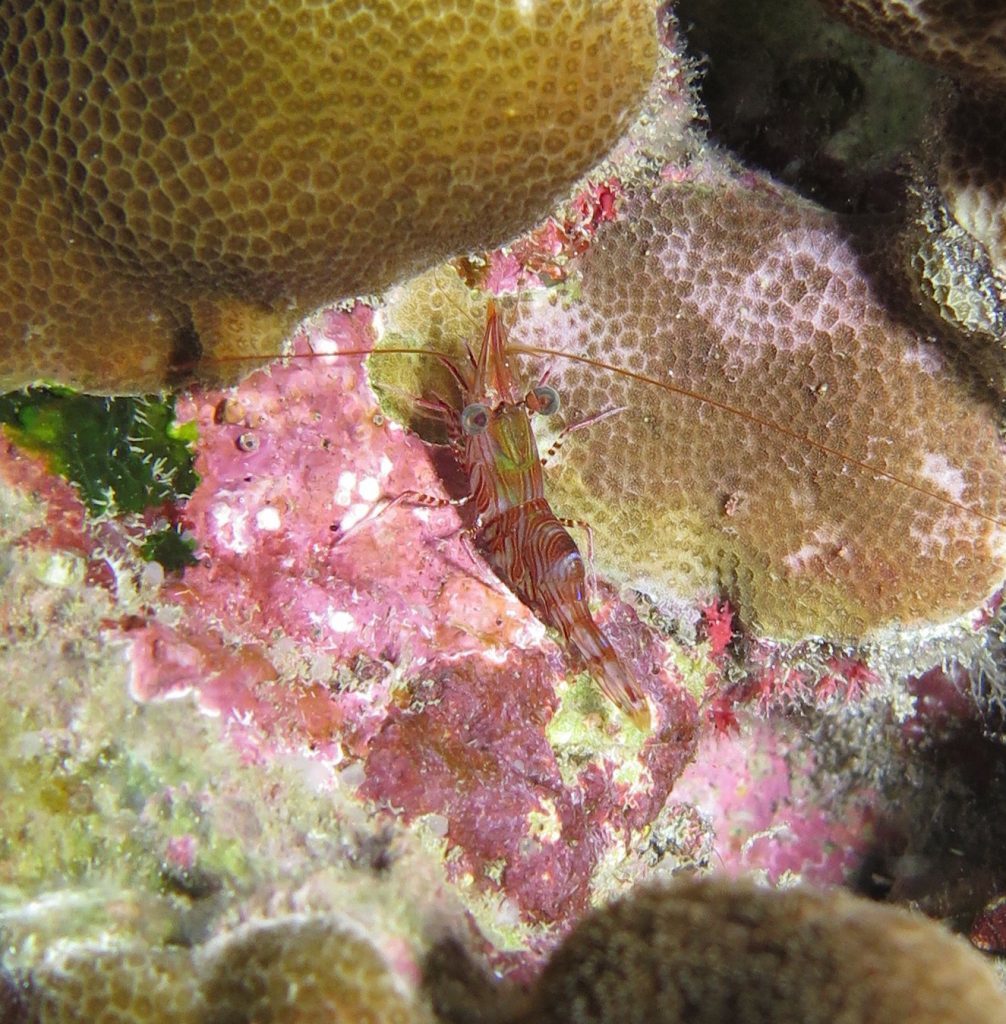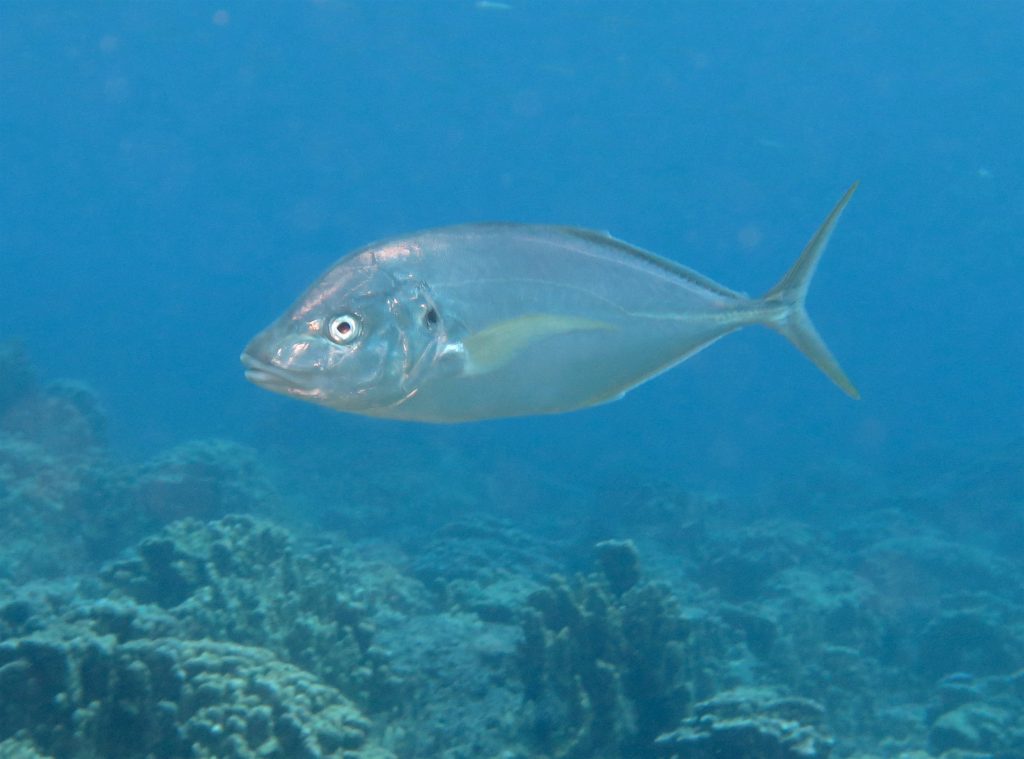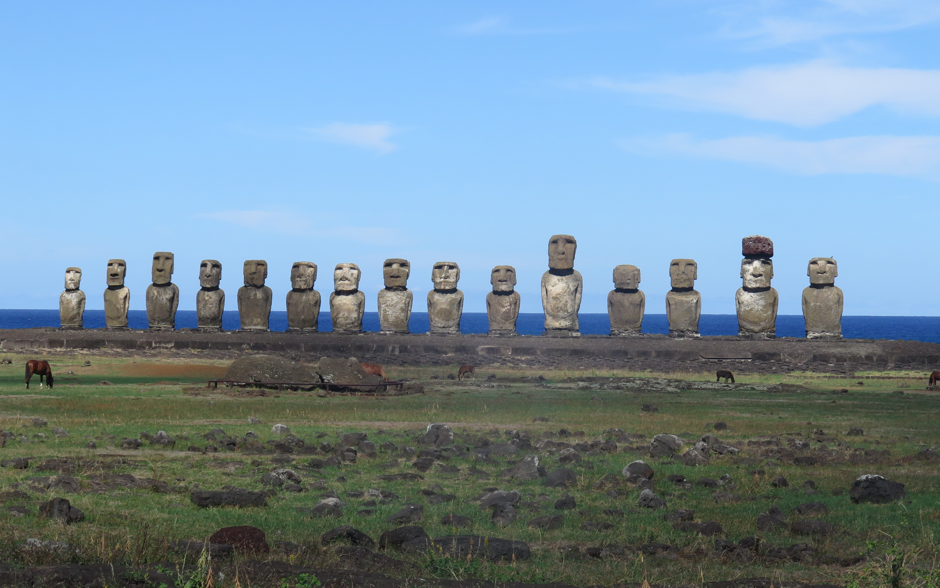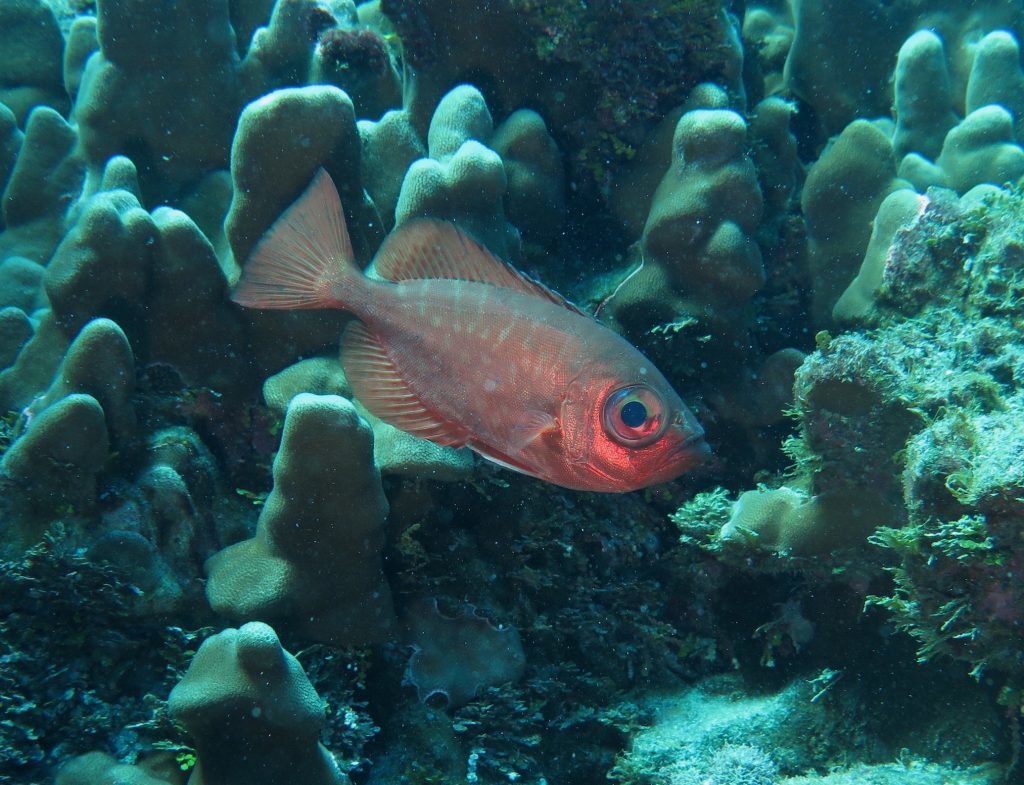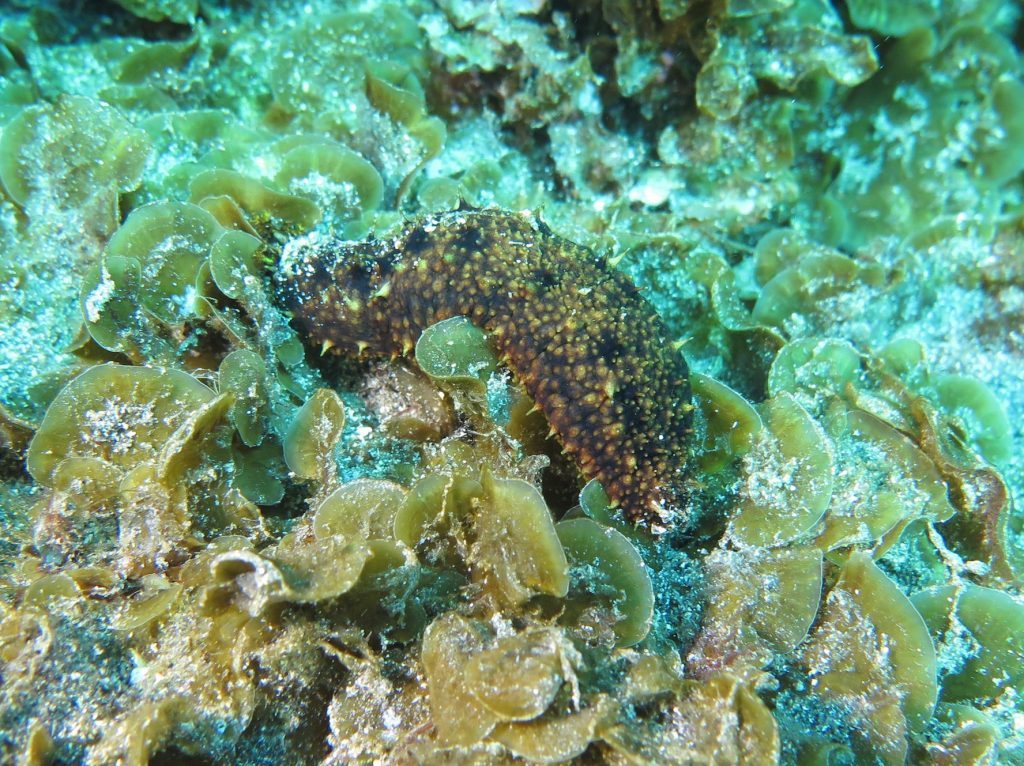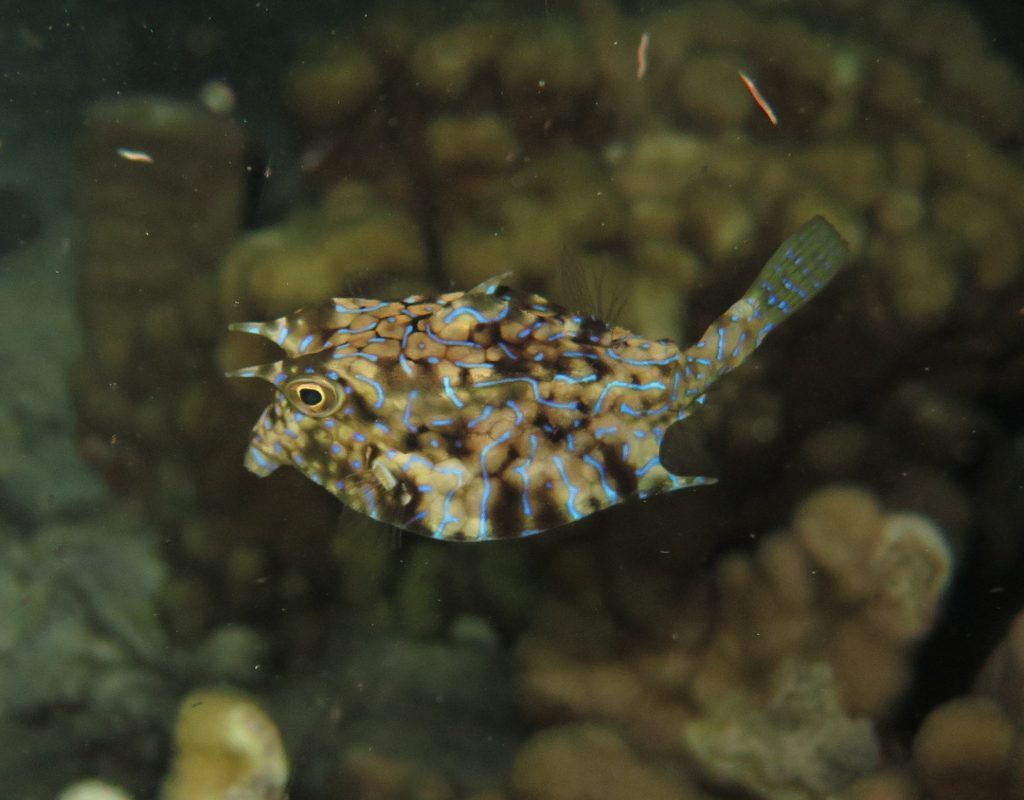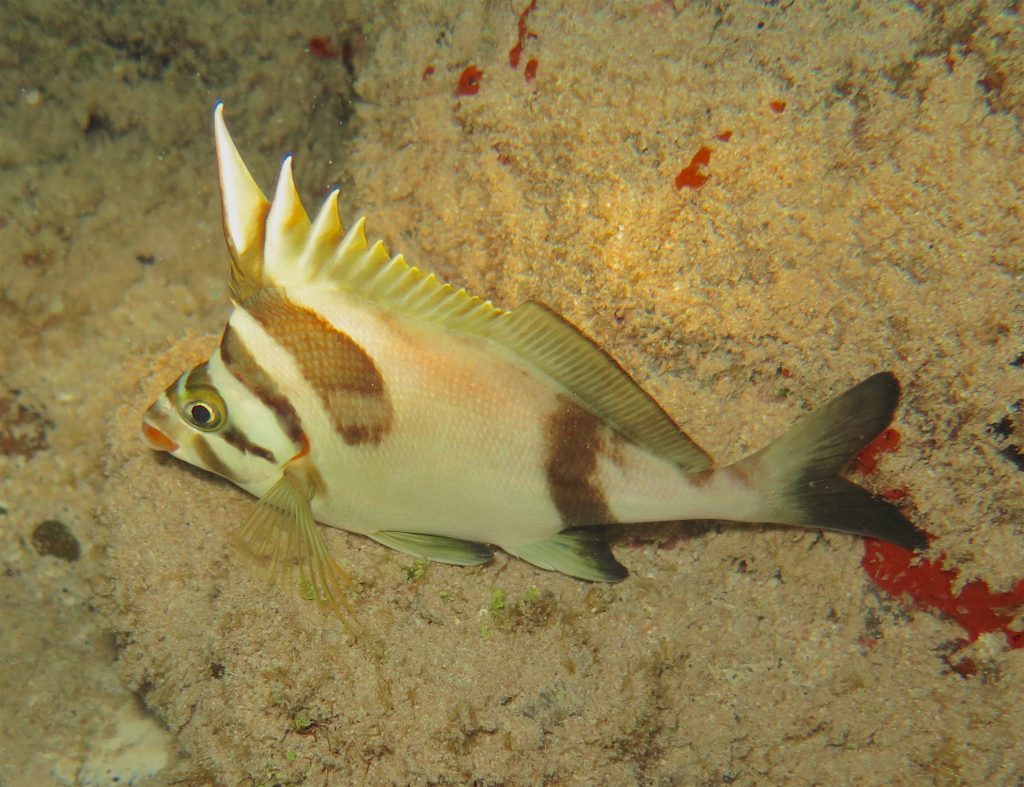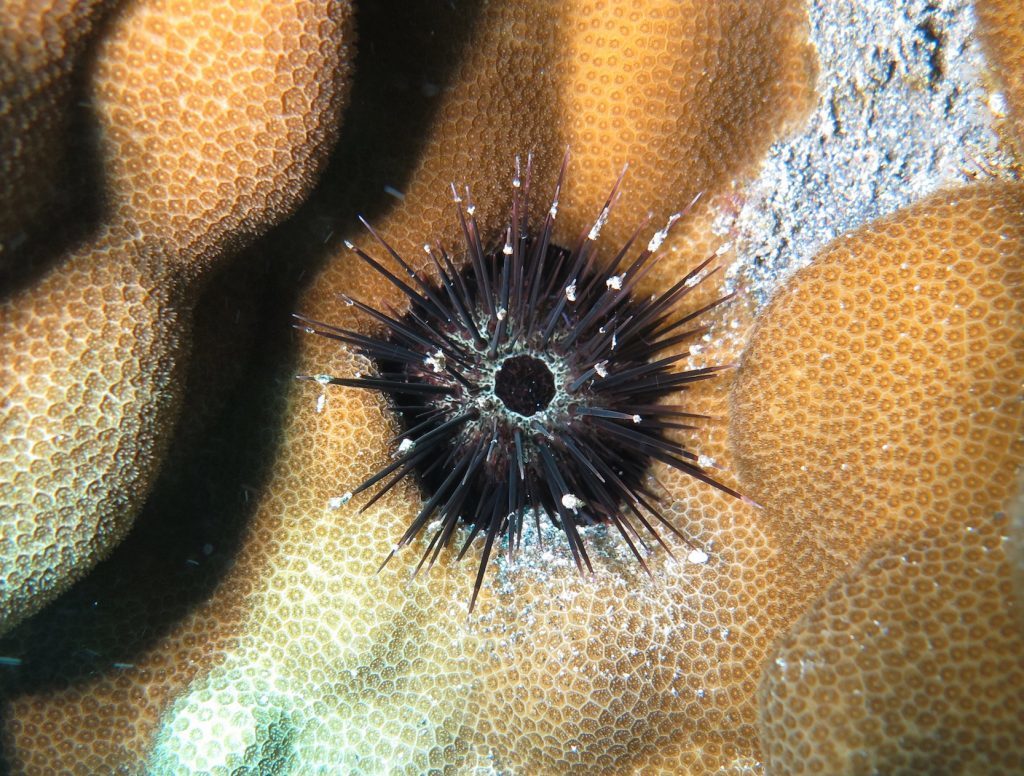Mention “Easter Island”, and for most Australians visions of giant stone statues ‘moai’, surf and volcanoes spring to mind. But it is the warm 24°C water and 50m visibility that makes Easter Island a pleasure to visit.
Easter Island is the most isolated inhabited island of the Pacific. It lies 2,800 kilometers west of Juan Fernández Islands off the coast of Chile, and 2,100 kilometers east of the Pitcairn Islands. The ‘moai’ stand guard over a truly unique and spectacular coral reef ecosystem.
Lobe Coral (Porites lobata) and flat coral (Pocilllopora sp.) form underwater mountains, while tropical fish and invertebrates make for interesting diving. A remarkable 21.7% of the near-shore fishes and 42% of invertebrates of Easter Island are known only from the island.
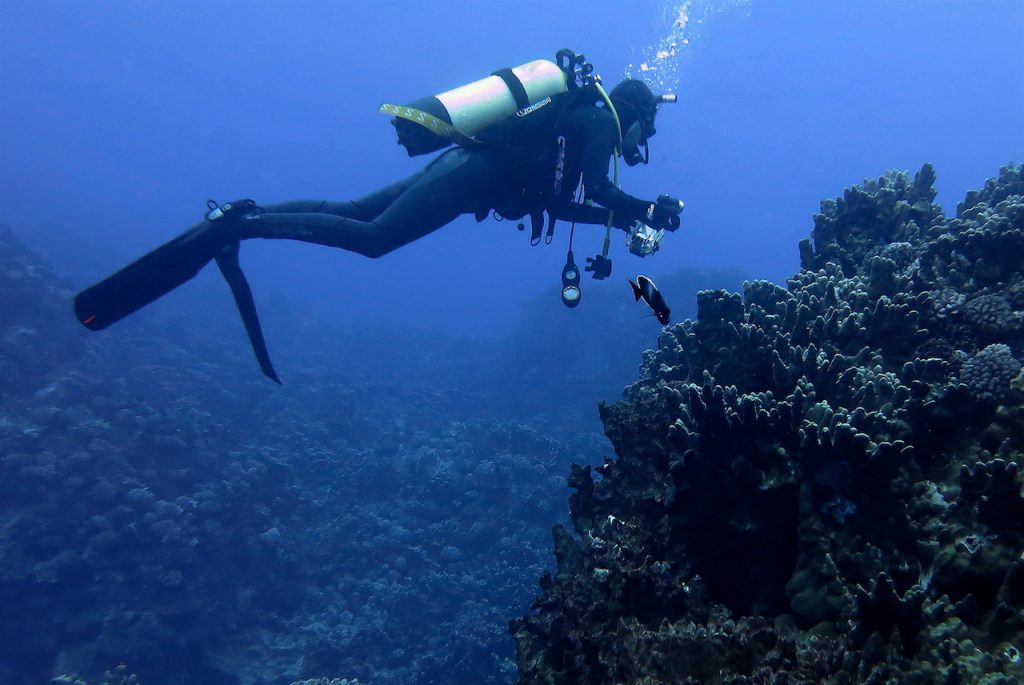
A total of 15 surveys were done ranging in depth between 3 and 18m. Reef Life Surveys had been done previously in 2011, thus the divers tried to replicate as many sites as possible. Redoing the surveys at exactly the same GPS point, depth can help us understand responses of the marine life to changes such as increased fishing pressure from the local people and El Niño events. Easter Island’s subtropical location makes it vulnerable to a loss of tropical species when cool sea temperature prevail, and subtropical species may be sensitive to prolonged periods of warm sea temperature. Key observations from the trip included many endemic fish species, such as Rapanui Butterfly fish tipi tipi‘uri (Chaetodon litus), Plessis’ Morwong (Goniistius plessisi), and Rapanui Flagtail, māhore (Kuhlia nutabunda). Thicklipped Jack po‘opo‘o (Pseudocaranx cheilio) and Glasseye (Heteropriacanthus cruentatus) were relatively common, whilst Thornback Cowfish (Lactoria fornasini) were only sited in the evening.
The sea urchin Diadema savignyi and Holothuria hawaiensis were the most abundant mobile macroinvertebrate, but many rare were also scored. Surveying these benthic communities is essential if we are to preserve the unique species of Easter Island.
A huge thank you to Taka, Freddie and Loti who ran the dive boats, Mitchell Garcia owner of the Orca Dive Centre for advice on the dive sites and research equipment and also to ESMOI research group from Universidad Catolica del Norte for making this happen.
